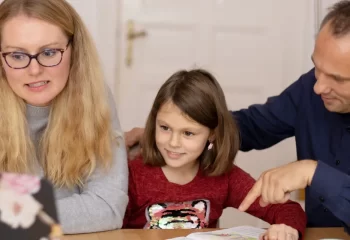Future Ready School Fundamentals
The future ready school fundamentals are a set of standards to help schools across the country prepare students for success in a rapidly changing world. The fundamentals are designed to provide schools with a framework that will help them meet the needs of today’s students and be ready for tomorrow’s challenges. Here are a few fundamentals future ready schools should focus on.
Learning Strategies
In order to be future ready, students need to be able to learn in a variety of ways. They should be able to learn from visual materials, written materials, auditory materials, and kinesthetic materials. Students should also be able to learn independently and collaboratively. They should be able to work with others in small or large groups, depending on the situation. Students need to be able to organise their thoughts and ideas so that they can communicate them effectively. They should also be able to think critically about what they are learning and how it relates to other things they have learned.
Future Ready Schools emphasise the use of modern technologies such as virtual reality headsets, augmented reality glasses, and 3D printers. They also use traditional tools like whiteboards, projectors, computers, and tablets. Each student is provided with his/her Chromebook laptop computer so they can access content anytime from anywhere in order to complete assignments or collaborate with other classmates.
Important Skills for Students
FRS allows students to explore their interests and develop skills they will use throughout their lives. Students learn to problem-solve, collaborate with others, think critically, and practice self-reflection. The program also helps students develop an understanding of their strengths and weaknesses and how those affect their learning.
Students will have access to various resources, including project-based activities that allow them to practice the skills they are learning in school. They will also have an opportunity to work on projects requiring them to collaborate with classmates and other community members.
Leading Future Ready Schools
These are schools that are doing an excellent job of preparing students for a future where they will be responsible for their learning and development. These schools have demonstrated success in helping students reach their full potential and understand the value of lifelong learning.
Future Ready Framework in Education
The future ready framework is a set of standards, benchmarks, and behaviours that describe what students need to know and be able to do to thrive in the future. It provides a common language for educators and other stakeholders to talk about what’s important for students to learn now and in the future.
This framework offers a unique opportunity for schools, districts, and states to align their efforts around the skills needed for tomorrow’s economy while meeting state-level standards. It also helps educators identify key areas where they can collaborate with employers and business leaders on career pathways that prepare students for college and careers.
Components
Education is a very important part of our lives and plays a vital role in shaping our future. The education system should be such that it prepares the students for future challenges, but at the same time, it should also provide them with an opportunity to explore their creativity. The future ready framework in education provides a platform for creating such opportunities. The future ready framework in education has three components:
Curriculum
The curriculum is the plan for what students will learn in a given grade level. The curriculum includes the content and the process of teaching that content. Curriculum decisions are made by educators, administrators, parents, and community members.
A curriculum is often divided into two categories: academic curriculum and behavioural curriculum. The academic curriculum includes subjects like reading, writing, science, social studies, and mathematics. Behavioural curriculum includes topics such as bullying prevention or character education.
Instruction
Instruction refers to the process of teaching students what they need to know to be successful in school and life after graduation. Teachers are responsible for delivering instruction to students in a manner that promotes learning and achievement. Teacher-student interaction ensures that students have access to quality information to make informed decisions about their future careers or educations.
Assessment
Assessment is the process of evaluating whether students have learned what they were supposed to learn during a specific time period or unit of study. Educators design assessments to determine whether an individual has mastered a specific skill or set of skills within a subject area, such as math or English language arts (ELA).
How Does It Help Students?
Future ready framework provides a road map for creating a culture of innovation that helps all students develop the skills they need to succeed in today’s world. Here is how students can benefit from this framework.
Enhancing the Quality of Learning
This framework helps students to improve their productivity, creativity, and analytical skills. They are able to develop these skills by using technology such as projectors, computers, and tablets.
Making Students Aware of Themselves
Students learn how they can use these tools effectively while learning. They also learn how they can use these tools for other purposes like communicating with others, creating websites, etc.
Embracing a Growth Mindset
The future ready framework encourages students to embrace a growth mindset where they believe they can learn anything no matter their age or experience.
Encouraging Collaboration and Team Work
Students are encouraged to work together on projects and assignments. This helps them learn about working together as a team, which is an important skill in the workplace. Students will also learn how to communicate effectively with each other so they can achieve their goals as a group.
Developing an Adaptive Mindset
This component focuses on cultivating students’ ability to think critically, solve problems creatively, and learn continuously. It includes teaching students how to learn new things and adapt to change by providing opportunities to work collaboratively.
The Use of Technology in Future Ready Schools
The use of technology in FRS is crucial to the success of tomorrow’s students. It is important that we prepare our students with the knowledge and skills they will need to be successful in a world where technology is constantly evolving.
Technology can be used in many different ways, but it all depends on how effectively it can be integrated into the curriculum. Technology can be used for instruction, assessment, and collaboration with other students and teachers.
Types of Technology Used
Technology has been a part of the educational system for decades. However, with the advent of new technologies, many more options are now available to educators and students. Here are some of the most common types of technology used in FRS.
Interactive whiteboards and displays
Interactive whiteboards are fit for future education because they allow students to interact with their teachers using touchscreens or stylus pens to draw on the board. Students can also use them as an alternative way to take notes during lectures or presentations.
Audio technology
Students can listen to lectures, podcasts, and other educational material on their smartphones or earbuds. They can also engage in virtual meetings and discussions with teachers, parents, and other students through Skype, Google Hangouts, or other programs.
Video conferencing platform
This enables students to interact with experts worldwide, providing access to information and knowledge that would otherwise be unavailable to them.
Digital textbooks
These textbooks are available as e-books or apps for smartphones and tablets so students can access them wherever they go. They often contain multimedia elements such as videos, images, and audio clips, making them more engaging than traditional textbooks.
Benefits of Using Technology in the Learning Process
Technology has become an essential part of our lives. It can help us to learn, work, and play. There are many benefits of using technology in future ready education. Technology has made our lives easier and learning more fun and interactive for students. The following are some of the benefits of using technology in the learning process:
It helps students to take control over their learning process by allowing them to choose how they want to learn a certain topic or concept.
It makes learning more interesting by allowing students to use different types of media, such as videos, animations, pictures, etc., which makes it easier for them to understand concepts better.
It also provides flexibility in choosing one’s schedule and time while studying a particular topic or concept as it allows them to study on their own time, which is very convenient for many people who have busy schedules due to work and other commitments such as sports games.
Technology also helps teachers in delivering their lectures easily without having to worry about losing their voice or getting tired easily because they can record their lectures using technology and play them back anytime they want during class time without having to repeat themselves too many times due to fatigue or illness.
Future Ready Librarians Framework
The Future Ready Librarians Framework (FRL) is a set of principles that can be applied to any library type. It offers a way to think strategically about the future while also providing guidance on how to create and implement change within your organisation.
The FRL helps leaders envision the future of their libraries and provides them with tools to anticipate change and prepare for it. It offers guidance on creating a culture that welcomes innovation and experimentation while supporting stability and consistency.
Future Ready Schools FAQ
Questions about FRS? Here are answers to the most frequently asked questions.
What Does a Future Ready School Look Like?
A future ready school is a learning environment that is personalised to each student, where they are the centre of their learning experience. FRS empowers students to take action and solve problems by providing them with the knowledge, skills, and experiences they need to be successful in college, career, and life.
What Is a Future Ready Curriculum?
A Future Ready Curriculum is one that is aligned with the new learning standards (Common Core), provides rich content that is relevant and engaging and develops 21st-century skills through a variety of instructional methods.
What Is Future Ready in Blended Learning?
Blended learning refers to using digital tools alongside traditional classroom instruction to enhance teaching and learning. This could mean using online videos or online textbooks alongside classroom instruction — or it could mean using online tools such as blogs or wikis for collaboration between students.
What Are Future Ready Schools?
Future Ready Schools is a national initiative that is part of the U.S. Department of Education’s vision for preparing students for success in college, career, and life. The initiative focuses on helping schools develop and implement continuous improvement plans that ensure all students graduate ready for college and career success.
What Is the Future Ready Initiative?
The Future Ready Initiative is guided by a set of principles outlined in the Future Ready Framework. The framework guides creating an optimal learning environment for all students, regardless of background or circumstance.
What Is the Goal of Future Ready Schools?
FRS is a national initiative that aims to prepare all students for success in college, career, and life. The program provides schools with resources and support to help them develop and implement plans that meet the needs of their students.
How Do Students Become Future Ready?
Students become Future Ready by building a foundation of knowledge and skills in three areas: STEM (science, technology, engineering, and math), social studies, and language arts/literacy. FRS is one way to ensure that these foundational skills are taught in every classroom in every school at every grade level.
There are many ways to help make classrooms future ready, but there are especially some smart steps that districts can take to ensure they’re moving at a swift pace. More schools are implementing these strategies every year, leading the charge in providing that students learn in the most modern ways possible.




